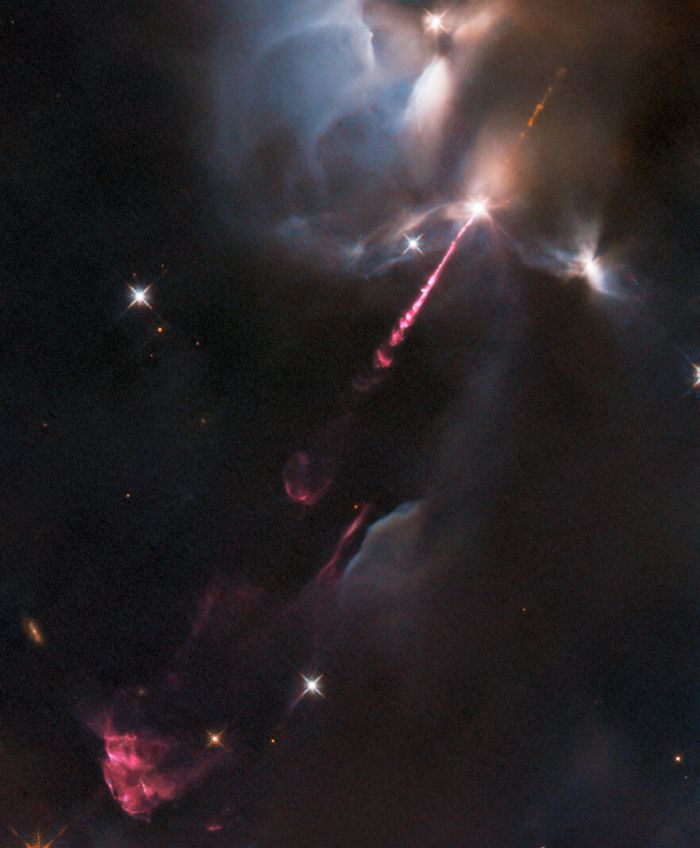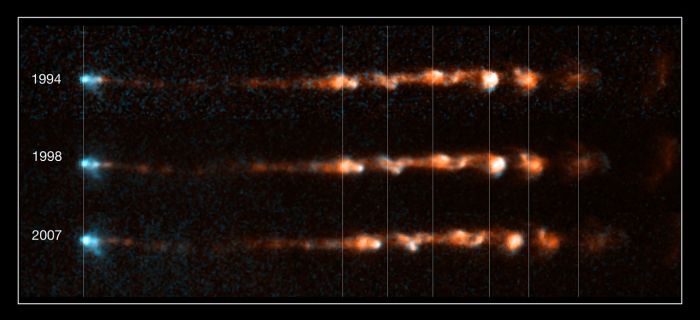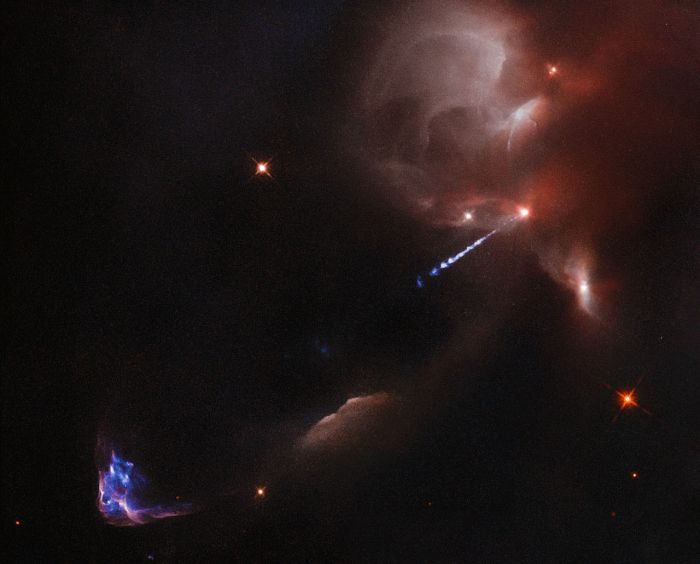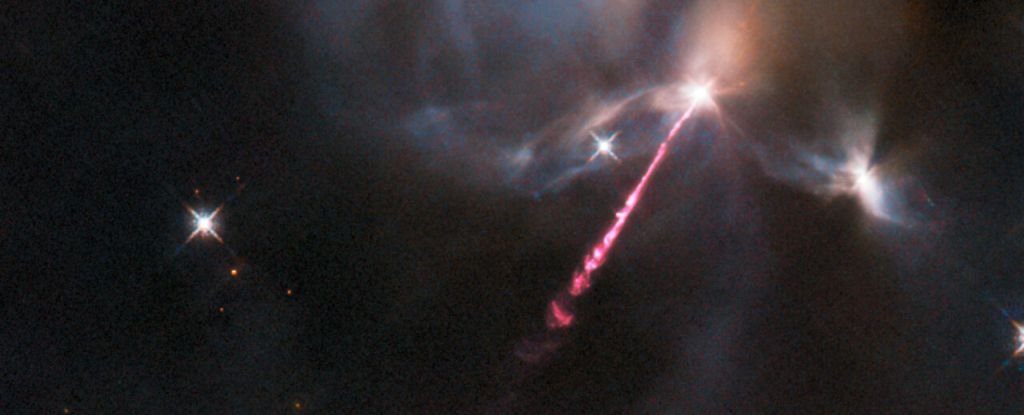Products You May Like
An epic outburst from a baby star still in the process of forming has been captured in a spectacular Hubble image.
Roughly 1,250 light-years away, in the Orion molecular cloud star-forming region, jets from a protostar are punching through the cloud at supersonic speeds, heating the gas and causing it to glow brightly. The result of this cosmic interaction is a short-lived, beautiful, and luminous structure known as a Herbig-Haro object.
This particular Herbig-Haro object is called HH 34, among the most spectacular phenomena we can observe in the Milky Way. But that’s not all it is. These fleeting outbursts, which can be observed changing on a scale of Earth years, contain clues that can help us figure out how baby stars are born.
 Baby star outburst HH 34. (ESA/Hubble & NASA, B. Nisini)
Baby star outburst HH 34. (ESA/Hubble & NASA, B. Nisini)
For a Herbig-Haro object to form, there needs to be a specific set of circumstances. It starts with a baby star, known as a protostar. Protostars form from dense clumps of gas and dust in a molecular cloud that collapses under its own gravity. As this celestial cradle spins, protostars start accreting material from the cloud around them.
During this process, the protostar can blast out powerful jets of plasma from its poles. It’s thought that some of the material that is swirling around the protostar gets funneled along its magnetic field lines.
These magnetic field lines accelerate particles so that, when the material reaches the poles, it is launched at considerable speeds into space as very tight collimated jets. The insane temperatures involved ionize the material, turning it into plasma.
 Earlier Hubble images of HH 34. (NASA, ESA, and P. Hartigan/Rice University)
Earlier Hubble images of HH 34. (NASA, ESA, and P. Hartigan/Rice University)
For a Herbig-Haro object, these jets, traveling at hundreds of kilometers per hour, then slam, hard, into the surrounding molecular cloud. Where these interactions occur, hot temperatures cause the material to glow brightly.
This makes it easier for us to track and observe the jets. As the protostar grows, it also starts to produce a powerful stellar wind. Together, the wind and jets are referred to as protostellar feedback, which is very important for the star’s evolution.
This is because they blow away the material around the star, which is thought to cut off its growth. That means that protostellar feedback plays a direct role in the final mass of the fully grown star.
 Hubble’s 2015 image of HH 34. (ESA/Hubble & NASA)
Hubble’s 2015 image of HH 34. (ESA/Hubble & NASA)
HH 34 is a particularly interesting case, with its multiple bow shocks defining the extent of the jets. The Hubble Space Telescope imaged it numerous times: in 1994, 1998, and 2007, and again in 2015. This new image is the most recent.
Because of how rapidly Herbig-Haro objects evolve, scientists can track the changes in the series and observe how the jet expands over time. This can also help map the cloud around the young protostar.
The recently launched James Webb Space Telescope will revolutionize our understanding of these jets. The infrared capability will allow it to peer into the densely dusty region around a protostar to shed more light on how these jets are launched.
You can download the above images in wallpaper sizes from the ESA Hubble website.
